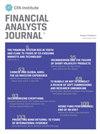关于在跨境结算中使用央行数字货币的新国际项目
IF 3.4
3区 经济学
Q1 BUSINESS, FINANCE
引用次数: 3
摘要
预计到2023年,数字卢布将在俄罗斯出现。计划允许使用数字金融资产进行交易的无延迟结算,智能合约的自动化使用以及预算计算的跟踪。财政部计划在预算结算中使用俄罗斯数字货币。数字卢布实验的第一阶段已经有多家银行参与,它们正在俄罗斯央行平台上测试数字钱包的开放:存款、公民之间的转账,以及商品和服务的支付。然而,问题仍然是,在今天的环境下,数字卢布是否有助于解决最重要的任务——促进跨境支付。虽然开发和测试阶段正在进行中,但有必要特别注意风险管理、系统稳定性、与其他形式法定货币互动的特殊性等问题,并确保在跨境结算中使用数字卢布。本文讨论了旨在研究数字交易主要渠道功能,识别问题领域和改进跨境支付领域现代技术的测试项目。本文的目的不是对任何特定项目的结果进行深入分析,而是对一些项目进行简要描述,以说明不同国家中央银行在这一领域的活动。本文也不打算比较这些项目并就其结果得出结论。为了将现有经验用于新项目,对一些项目进行更深入研究的一个例子是哈萨克斯坦国家银行“数字坚戈项目”(2021年)的报告。所有这些项目通常都是由中央银行以及积极参与国际支付关系的国际组织和全球金融市场参与者发起的。对项目测试期间取得的结果的研究使我们了解了cbdc的定居点,包括跨境定居点,在不久的将来可能会如何发展。本文章由计算机程序翻译,如有差异,请以英文原文为准。
New International Projects on the Use of Central Bank Digital Currencies in Transforming Cross-border Settlements
In 2023, digital ruble is expected to appear in Russia. It is planned to allow for delay-free settlement of transactions with digital financial assets, automation of the use of smart contracts, and tracking of budget calculations. The Ministry of Finance plans to use the Russian digital currency in budget settlements. The first phase of the experiment to use a digital ruble has already involved a number of banks that are testing the opening of digital wallets on the Bank of Russia platform: deposits, transfers between citizens, as well as payments for goods and services. However, the question remains whether the digital ruble in today's environment will help solve the most important task — to facilitate crossborder payments. While the stage of development and testing is underway, it is necessary to pay particular attention to the issues of risk management, system stability, the peculiarities of interaction with other forms of fiat money, and to ensure the use of digital ruble in cross-border settlements. This article discusses test projects which are aimed at studying the functioning of the main channels of digital transactions, identification of problem areas and improvement of modern technologies in the field of cross-border payments. The purpose of this article is not an in-depth analysis of the results of any particular project, but a brief description of a number of projects to illustrate the activities of central banks of different countries in this area. Nor is it intended to compare these projects and draw conclusions about their results. An example of a more thorough study of some projects in order to use existing experience for new projects is the Report of the National Bank of Kazakhstan “Digital Tenge Project” (2021). All these projects are usually initiated by central banks, as well as international organizations and global financial market participants actively involved in international payment relations. The study of the results achieved during the testing of the projects give us an understanding of how settlements in CBDCs, including cross-border ones, may develop in the near future.
求助全文
通过发布文献求助,成功后即可免费获取论文全文。
去求助
来源期刊

Financial Analysts Journal
BUSINESS, FINANCE-
CiteScore
5.40
自引率
7.10%
发文量
31
期刊介绍:
The Financial Analysts Journal aims to be the leading practitioner journal in the investment management community by advancing the knowledge and understanding of the practice of investment management through the publication of rigorous, peer-reviewed, practitioner-relevant research from leading academics and practitioners.
 求助内容:
求助内容: 应助结果提醒方式:
应助结果提醒方式:


